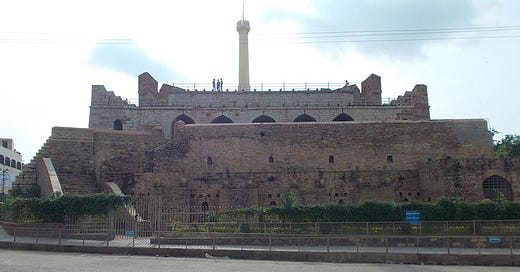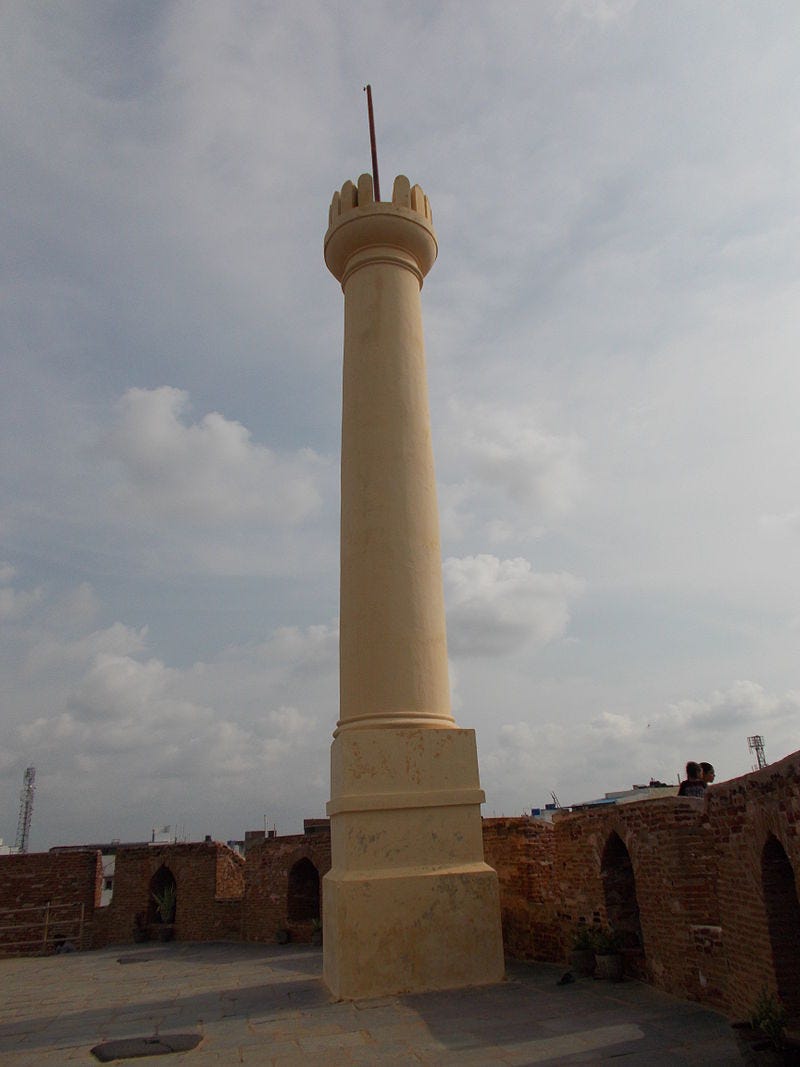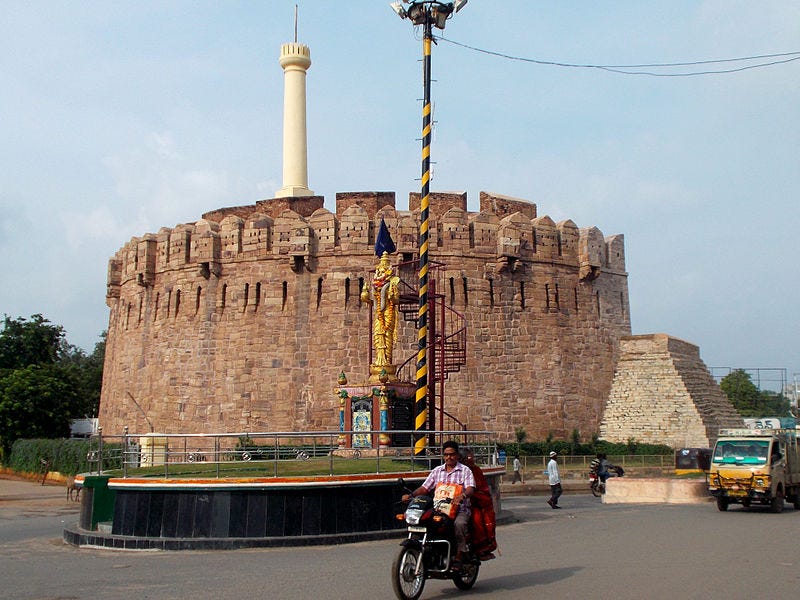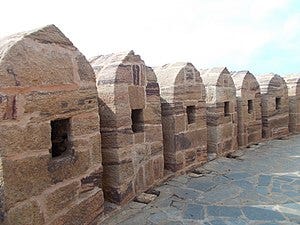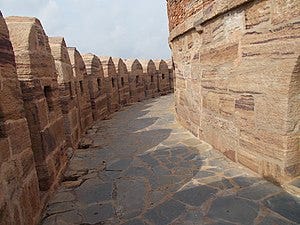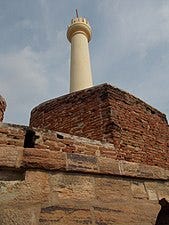Konda Reddy Buruju
Konda Reddy Buruju, located in the center of Kurnool, the city's defining landmark.
Kurnool was originally called Kandenavolu, during medieval times, it was a transit point, where carts carrying stone slabs to Alampur, used to stop here to apply grease(Kandena) to the wheels. After the fall of Vijayanagara empire, post Tallikota, Kurnool came under the control of the Golkonda sultan Quli Qutub Shah. Later the place passed into the hands of the Mughals, and Marathas for some time.
When Tipu Sultan fell to the British at Srirangapatnam in 1799, Kurnool came under the control of the Nizam, who later handed it over to the British in 1800. Reason why this region was called Ceded or Datta Mandalam.Freedom fighter, one of the pioneers of the library movement in Andhra Pradesh, Gadicherla Harisarvottama Rao, was the one who coined the term Rayalaseema for the first time in 1928.
When Andhra State was formed in 1953, Kurnool served as the capital till October 1956, after which Hyderabad became the capital. The current district court building then served as the assembly.
The name in due course of time was corrupted to Kurnool. Kondareddy Buruju is one of the 4 towers of the original Kandenavolu fort. However the other 3 are pretty much in ruins, and most of the original walls were demolished during British rule, for city expansion.
There is an Erra Buruju( Red Tower) located in the city near Victory Talkies, so called as it was built of red sandstone, that also has the Pedda, Chinna Yellamma temples. The other two towers are located near the Tungabhadra river, both in ruins. The Kandenavolu Fort was gifted to Aravidu Ramaraju by Tuluva Veera Narasimharaya who was the emperor of Vijayanagara between 1505-1509 AD, as gratitude for repelling an invasion by the Bijapur sultan Yusuf Adil Khan.
While Ramaraju is believed to have also built the Konda Reddy Buruju, as per most historians it was built by Achyutadeva Raya, brother of Sri Krishna Deva Raya. In fact it was originally called Achyutadeva Raya Buruju.
Konda Reddy was a Palegar of Nandikotkur, who was imprisoned here, when he revolted against Abdul Wahab, the representative of the Bijapur sultan at Kurnool, and was defeated. However some claim he was imprisoned by the British, when he revolted against them.
Gannavarapu Subbaramaiah, writing about Kurnool in 1930, claimed that the British used the tower for storing opium. However the name of Konda Reddy Buruju seems to have been more in use post 1950. The tower was built with stones from the Jagannatha Ghat on the Tungabhadra river using mixture of sand, lime and jaggery to bind them together. And it consists of two floors.
There is an underground tunnel built from the Kondareddy Buruju to Alampur that passed right under the Tungabhadra river bed for residents to escape in case of an attack. However the tunnel has been closed now. The entire structure is divided into 4 parts, in the lower half, is a small room for the guards. And a spacious staircase leading to the first floor on the southeast side.
The stairs leading to the first floor are somewhat steep, likely to slow down advance of enemy soldiers. As well as the larger quarters for the soldiers here. There are 4 pillars in the center to support the structure.
The stairs leading to the first floor are somewhat steep, likely to slow down advance of enemy soldiers. As well as the larger quarters for the soldiers here. There are 4 pillars in the center to support the structure. The second floor is shaped like a semi circle, apart from rooms built for the soldiers, there are also large openings in the walls, from where they could fire on the enemy soldiers, as well as throw stones on anyone trying to climb up the walls.
In the center of the second floor there is a 168 ft tall pillar, dating to British times. This pillar served both as an observation tower, as well as to hoist the flag. And this can be seen prominently on the Buruju.
Kondareddy Buruju is Kurnool's most prominent landmark, a popular attraction, also used as the backdrop for many Telugu movies, especially those with a Seema background like Preminchikundam Raa, Okkadu and recent Sarileru Neekevaru.

